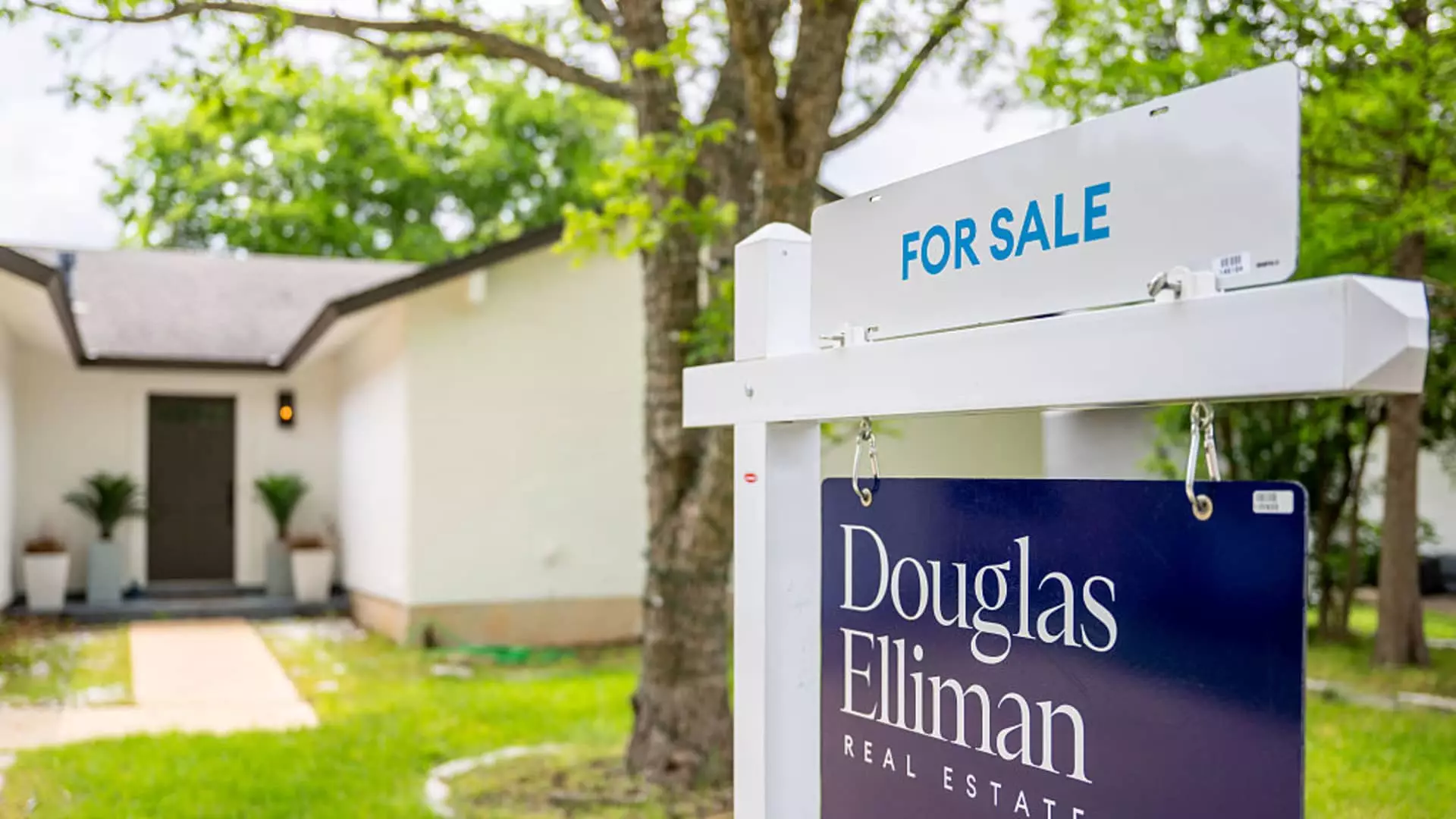In a world where the real estate market is often celebrated as an indicator of economic health, the latest figures regarding previously owned homes for May paint a less-than-rosy picture. Although there was a modest increase of 0.8% in sales compared to April, reaching a seasonally adjusted annualized rate of 4.03 million units, this is hardly the breakthrough the market has been eagerly anticipating. Housing analysts had expected a decrease of 1%, which indicates a pervasive sense of uncertainty rather than optimism in the market. Year-over-year figures reveal a decline of 0.7%, suggesting that any slight uptick in sales is more a symptom of fluctuating dynamics than a robust recovery.
Delving deeper into the specifics, we discover that sales in the Northeast saw a commendable rise of 4.2%. However, this increase is overshadowed by a staggering drop of 5.4% in the West, a region troubled by excessive housing prices that plague the majority of its residents. It begs the question: is the housing market genuinely improving, or are we merely witnessing a few outliers floating above a sinking ship?
The Mortgage Rate Dilemma
One of the most pressing challenges facing potential homebuyers today is the unyielding grip of high mortgage rates. The average 30-year fixed mortgage rate remained static in March but surged above 7% in April, a development that sends shivers down the spines of prospective buyers. Lawrence Yun, chief economist at the National Association of Realtors (NAR), articulates a crucial point: lower interest rates are critical to rekindling buyer enthusiasm. Yet, this insight raises an unsettling paradox—are high mortgage rates a necessary evil to stabilize the market or a destructive force that stifles entry into homeownership?
As foreclosure rates rise and consumer confidence wanes, the market appears to be trapped in a vicious cycle. High mortgage rates deter buyers, leading to stagnant sales and ultimately impacting sellers who are unable to offload their properties swiftly. Compounding this issue are rising prices; the median sales price of a home in May hit $422,800—marking a record high for the month. Such figures indicate an uncomfortable juxtaposition between supply and demand, causing many would-be homeowners to abandon their pursuit entirely.
Supply vs. Demand: A Misleading Narrative
A significant increase in housing supply—over 20% year-over-year—has led to 1.54 million homes on the market, which in theory should lead to more sales. Yet the reality reveals an alarming truth: buyers are not responding as anticipated. The current sales pace represents a mere 4.6-month supply, which is on the lighter side historically. This merely illustrates that although inventory levels are increasing, it is not translating into successful transactions. The pressure on prices remains, with nearly 28% of homes selling above list price—an indicator of underlying demand. However, this data can mislead when considered alone; the reality is that homes are sitting longer on the market, increasing from 24 to 27 days.
Despite this narrative of increased supply, a closer examination reveals a troubling trend—the vast majority of buyers continue to be cash-rich investors rather than regular homebuyers. A mere 30% of transactions involved first-time buyers, down from last year’s already low rate of 31%. This further solidifies the notion that a significant barrier to entry remains omnipresent.
Markets Fluctuating and Future Uncertainty
The dynamics of the luxury segment are worth noting, as they shift from outperforming lower price points to reflecting more widespread market volatility. Homes priced over $1 million have taken a hit compared to previous years, whilst the segment between $750,000 and $1 million has shown a slight increase of just 1%. Such minor fluctuations might suggest that an overall trend of declining confidence is influencing even those who have traditionally been insulated from economic pressures.
Homeownership, meant to be a cornerstone of the American Dream, is becoming increasingly elusive. With fewer first-time buyers and more cash transactions, the traditional model of climbing the property ladder is increasingly jeopardized. Market forces are creating a paradigm where only affluent buyers can thrive.
In essence, while some may choose to see improvements amid this market uncertainty, the reality is a far more nuanced and concerning landscape that challenges the sustainability of our housing market moving forward. As we navigate this complex terrain, it’s evident that we are not merely contending with fluctuating statistics, but with a profound crisis impacting the very foundations of our economy and society.


Leave a Reply